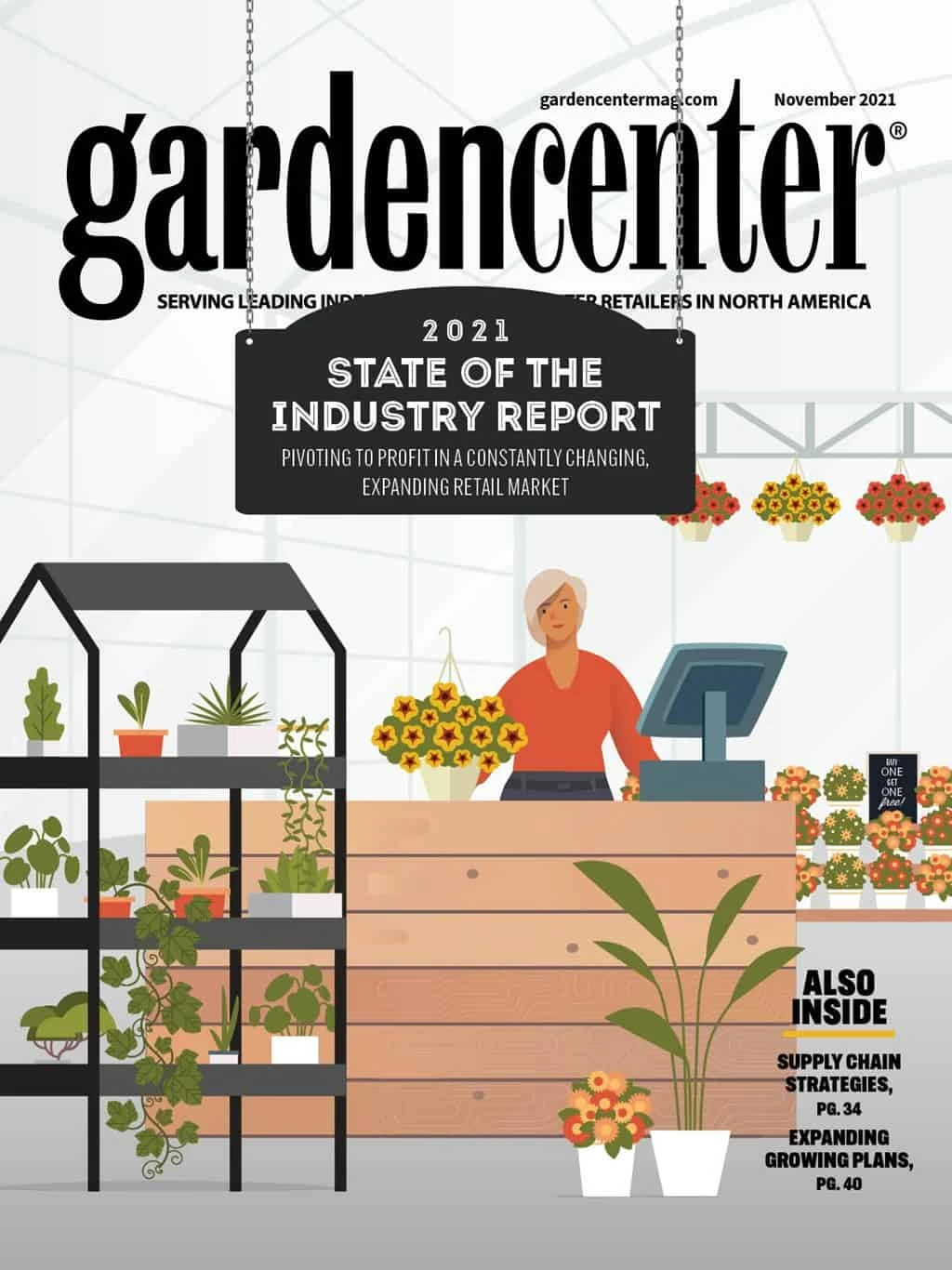

The challenges of COVID continue to force the green industry to be quick on its feet, and the effects are going to be long-lasting, according to Dr. Charlie Hall, Ellison Chair in International Floriculture at Texas A&M. “COVID has forced us to be better business managers across the board whether you’re a grower or a landscape service provider or a retailer,” he said during a Garden Centres Canada Speaker Series presentation. “We are not going to waste that crisis.”
The shape of recovery is going to follow the shape of COVID, Hall said, especially as the Delta variant affects reopening plans in both the U.S. and Canada.
Supply chain
The rising price of moving material through the supply chain plus the increased time is causing problems throughout the green industry. From problems finding labor for production and manufacturing to a severe driver shortage, the supply chain problems won’t be going away anytime soon. The U.S. was about 46,000 drivers short at the time of publication due to high retirement levels, driving school closures during COVID and problems matching up team drivers for freight due to vaccination status. All of this is contributing to the increased truck rates.
“All of this pressure is going to continue until at least 2022,” Hall said. “It just simply can’t get better fast enough.”
Hall said this may provide some room for niche players, and the demand for local or regional products will increase. “It’s going to cost a lot of money to build the supply chain domestically to handle a portion of that demand.”
So, Hall expects to see a bullwhip effect on inventory. “We’ve seen that in every recent economic downturn,” he said. The labor shortage doesn’t seem to be letting up any time soon either. Along with the pandemic has come what many are calling The Great Resignation. More than 30% of people are not planning to go back to the same level of work they were doing 18 months ago, Hall said.
“People are re-evaluating their hour-long commute or working in the service industry,” he said. “They’re looking at their alternatives in terms of job placement.”
Costs across the board
Production costs increased dramatically as freight became more expensive and material prices rose. Container costs, for example, are 43.5% more expensive now than they were pre-Recession in 2007. Overall, the cost of inputs at the grower level has increased 13-14%, which means prices will need to raise at least the same amount, or growers are going to lose margin.
Since growers are going to need to increase prices, retailers will need to raise their prices accordingly.
“Also, consider that demand is really increasing,” Hall said. “Retailers aren’t getting a lot of pushback on the price increases they’ve already done. How much is going to be too much before you get pushback from the end consumer?”
Gross sales for garden centers are up 23.4% through August, according to Hall’s numbers but the jury is still out on the rest of the year. While sales from January through May of 2021 were much higher than last year, June numbers were significantly lower and July was about even.
Retailers saw increased online sales along with higher traffic and spending per transaction. But input prices have gone up for both plants and hard goods. Due to supply chain issues, substitution became more normal, and IGCs are buying ahead and stocking up where they can to fill demand, Hall said.
Another change that’s here to stay is contactless shopping. “Make no doubt, the consumer likes it,” Hall said. “You see it at the grocery store level and the garden centers that offered that, they’re going to keep doing that.”
2022 and beyond
Hall predicts a pent-up demand in 2023 as people get more comfortable hosting events, which could lead to increased lawn and garden spending.
He’s also expecting to see more mergers and acquisitions.
“There’s strong demand and higher margins so here come the venture capitalists,” he said. “And most of the time, that hasn’t been necessarily beneficial for our industry.”

Explore the November 2021 Issue
Check out more from this issue and find your next story to read.
Latest from Garden Center
- [WATCH] Looking Back to Spring Ahead: Where we’ve been & where the industry is headed in 2026
- Seed Your Future plans to bring 80+ students to MANTS 2026
- Donna McGinnis named next CEO of Denver Botanic Gardens
- HRI Leadership Academy opens applications for 2027 class
- Sustainabloom introduces Sustainability Planning Template for Retail Florists
- Burpee releases commemorative seed collection to celebrate America's 250th anniversary
- New Michigan box tree moth alert available in English and Spanish
- Seed Your Future announces board updates, 2025 Cross-Curricular Career Lessons





